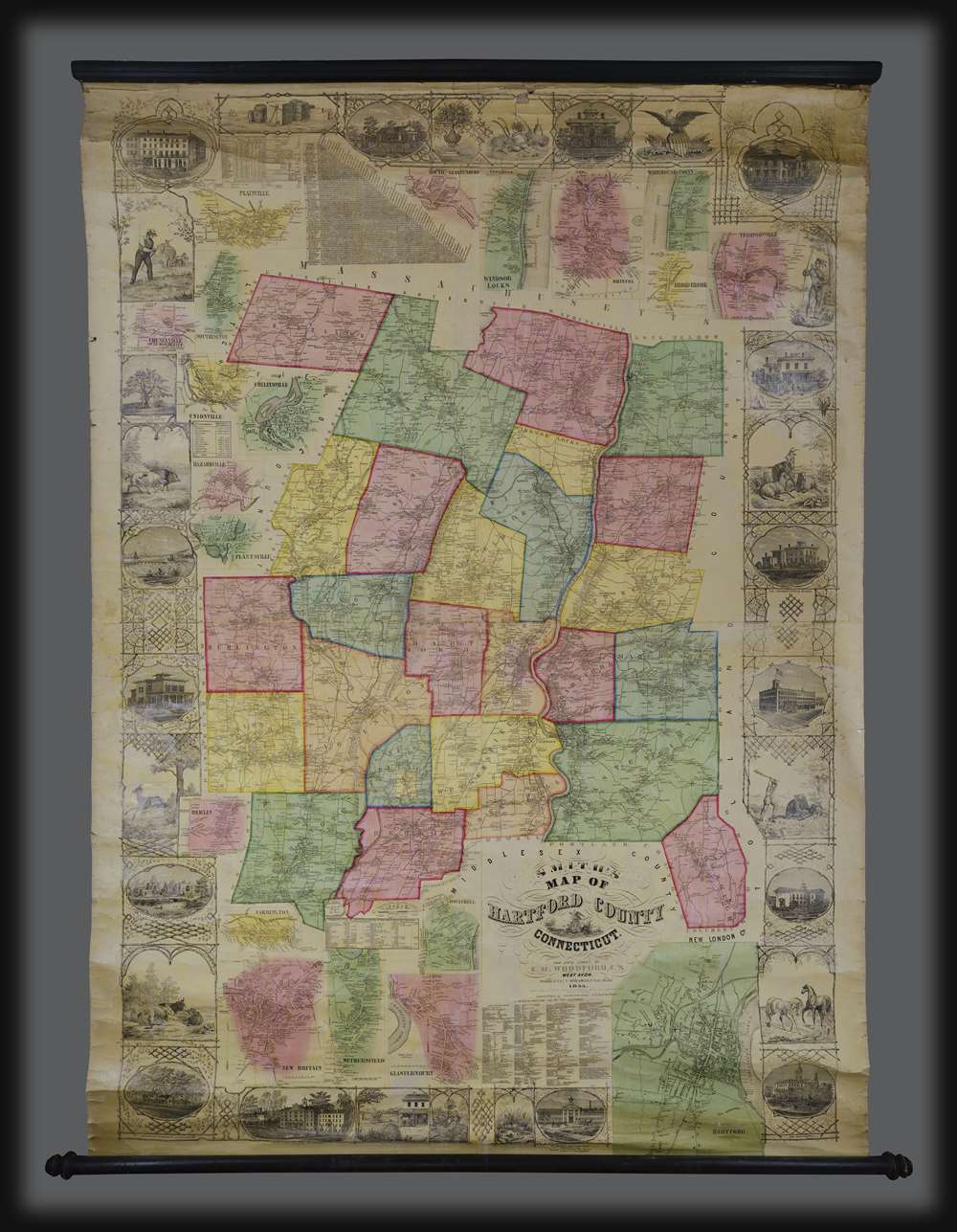
This item below is out of stock, but another example (left) is available. To view the available item, click "Details."
Details
1855 Woodford Wall Map of Hartford County, Connecticut
$3,000.00
1855 Woodford Wall Map of Hartford County, Connecticut
HartfordCounty2-smith-1855
Title
1855 (dated) 69.6 x 47 in (176.784 x 119.38 cm) 1 : 63360
Description
Publication History and Census
This map was drawn based upon surveys completed by Edgar M. Woodford, an important Connecticut surveyor. It was engraved and printed by Wagner and McGuigan, and published by H. and C.T. Smith, both Philadelphia firms. Five examples are cataloged in OCLC which are part of the collections at the Connecticut Historical Society, Connecticut State Library, the Library of Congress, Pennsylvania State University, and the Osher Map Library at the University of Southern Maine.Cartographer
Edgar Maurice Woodford (April 15, 1824 – October 1, 1862) was a mid-19th century American abolitionist, civil engineer, surveyor, and map publisher active in New England. Woodford was born on his family farm in Avon, Connecticut. Although self-taught as a surveyor, he rose to become the official Hartford County surveyor. He was described by a nephew as 'a great strapping man,' who would come 'over the hills with his [surveying] instruments over his shoulder, crying for fear his work would not come out right.' Woodford produced numerous county surveys in Connecticut, Maine, and Massachusetts. Typically Woodford worked with other cartographers, but from time to time, he published independently, including his maps of Belfast and Frankfort, Maine, as well as Belknap, New Hampshire. As an abolitionist Woodford was part of the 1856 'Connecticut Colony in Kansas,' an attempt to colonize Kansas with enough abolitionist New Englanders to sway the vote and force Kansas to enter the Union as a Free State. When the Civil War broke out he enlisted in the Seventh Connecticut Volunteer Infantry, where he was assigned the rank of Quartermaster. It was during the war when he passed away in Hilton Head Island, South Carolina, of 'congestive fever,' an archaic term for malaria. He is interred in the soldiers cemetery at Hilton Head. More by this mapmaker...

